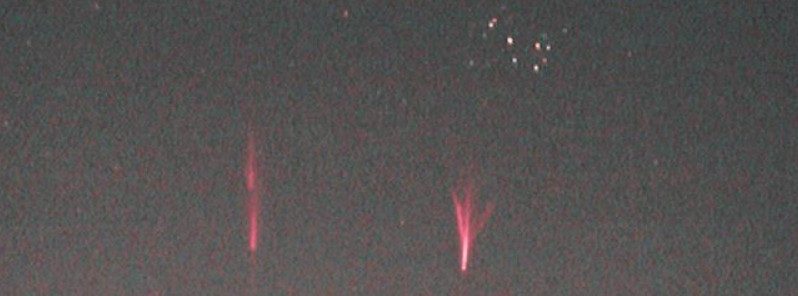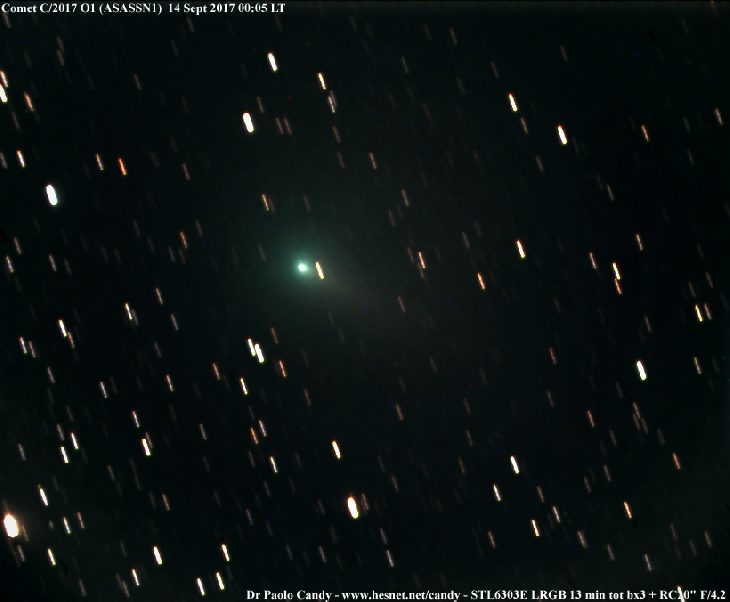
© Martin PopekRed sprites over western Czeckia on April 4, 2018
Two red sprites, transient optical phenomena appearing as luminous reddish-orange flashes, have been recorded over the Czech Republic on April 4, 2018, marking the early beginning of 2018 sprite season in the northern hemisphere.
Lucky photographer this season was again well known Martin Popek who captured them above storms over western Czeckia on April 4 below Pleiades star cluster:
Because sprites are associated with thunderstorms,
they tend to occur in late spring and summer. However, western and central Europe recorded more than 100 000 lightning strikes over the past 48 hours. It was enough to produce sprites and allow us to photograph them.
"Sprites are a true space weather phenomenon," lightning scientist Oscar van der Velde of the Technical University of Catalonia in Spain explained. "They
develop in mid-air around 80 km [50 miles] altitude, growing in both directions, first down, then up. This happens when a fierce lightning bolt draws lots of charge from a cloud near Earth's surface. Electric fields [shoot] to the top of Earth's atmosphere - and the result is a sprite. The entire process takes about 20 milliseconds."

Comment: He may have noticed it in the 1980's but it has only officially been recognised since around 2017, and was a surprise to many veteran aurora guides - and interestingly, sightings of Steve are on the increase: